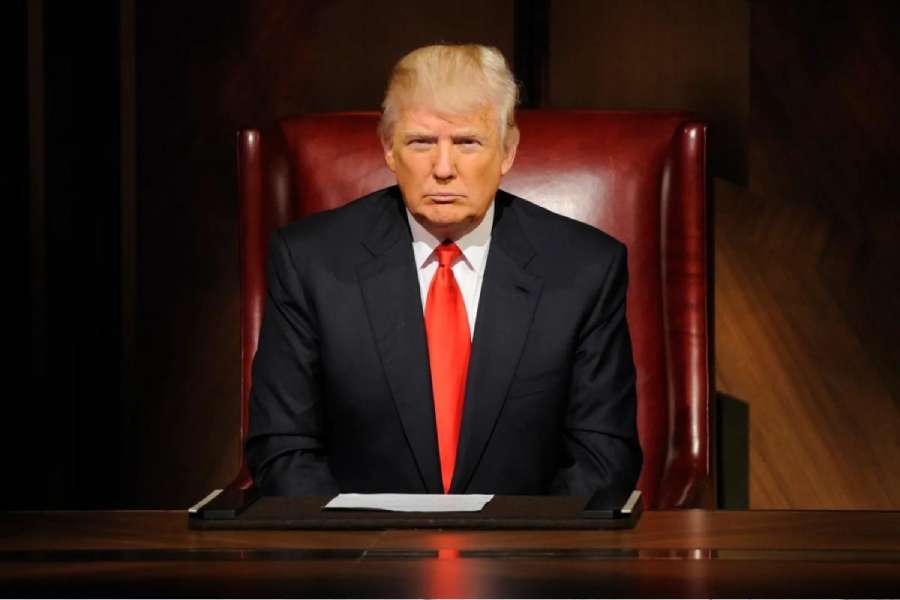Ever since Donald Trump ascended the presidency of the United States of America, the world economy has been on a roller-coaster ride. Trade tirades have consistently rocked it thereon. The cornerstone is the aggressive tariff-for-tariff agenda, an election pledge that included pruning the size of the government and government spending, deregulation and tax cuts. Import levies have been raised, then eased or deferred, some even reversed, creating confusion and doubts about policy sincerity. If that is not enough, the dollar’s reorientation to the US’s economic agenda is also reported to be under consideration. The environment is chaotic, there isn’t a consistent strategy visible, the end game is impossible to discern. The atmosphere is filled with uncertainty. Consumers and investors are rattled. No business can invest or incur risk when policy, specifically trade policy uncertainty, is so high. The casualty will be the world economy and early signals are a pointer to that.
The promised 25% steel and aluminium duties materialised in mid-March, triggering a chain of reactions that are yet to settle. Another tranche is due on April 2. Countries at the receiving end of tariff firing have responded differentially. Counter-retaliatory measures vary in number, extent, product selection, and strategy, with some countries like Canada and the European Union targeting US political constituencies and daily consumption items to put back pressure through higher domestic prices. Besides targeted levies, the EU has responded to the steel tariffs by restoring levies under a past tariff deal while Canada waits for comprehensive trade and security talks; both are additionally impacted by the US’s reneging on security arrangements.
Retaliation has also come from China, a large and competitive steel producer, sparking fears amongst others about dumping excess steel. India and the United Kingdom, with whom the US wants broad trade agreements, are relying upon negotiations. Prominent steel producers, like South Korea, have rushed to discuss matters and Japan is reported to be ready to sell its US debt holdings in reciprocation on an altogether different front. Meanwhile, prices have shot up, including within the US. Tariff declarations have not gone unchallenged either, with neighbouring countries like Canada leading the pack, inviting threats, other to-and-fros, and an unexpected political fallout from angered voters and anti-US sentiment strengthening Canada’s Liberal Party.
The ‘no-distinction among friends, foes, and allies’ approach in the tariff aggression has a fundamental side to it — uprooting decades of established, well-oiled production and supply chains, related infrastructure and networks. There is little to no clarity as to what will replace this and for which goods; if, when, and where any manufacturer would shift; what the final markets could be; or what will be the extent of trade diversion, its composition and country-wise reconfiguration. The range would be mind-boggling for analysts even if the key elements were known. So which company will gain, lose or remain neutral is anyone’s guess.
The US’s ditching of established security structures has had fundamental spinoffs too, shocking its biggest post-War ally, the European Union, into action on self-security. The region will increase spending on defence; it no longer excludes nuclear options. Its growth locomotive, Germany, was quick to amend its Constitution and lift its borrowing limits for €1 trillion worth of capital investments to rebuild defence capabilities and create a 12-year fund of €500 billion to upgrade hospitals, schools, roads and energy networks down to the regional government levels. There is a visible structural shift with homeshoring defence purchases and reconfiguring and reviving its weakened industrial base.
The compressed preview illustrates the complex maze of actions, counter-responses and second-order effects spinning off in all directions and dimensions, not all of which are fully imaginable. The final outcomes are thus impossible to predict and hugely uncertain. The safest or most certain knowledge is that all investments, especially long-term capital ones that have a 20–40-year horizon, require policy certainty and there is ample deficit of that. None is sure of future earnings, prices, markets, production locations and such else. All this would eventually hurt the world economy.
There is little surprise that the spate of incoherent actions and counter-responses have seriously dented US consumer sentiments, raised household inflation expectations — signalling a disclination to spend — and heightened fears. Business confidence and outlooks are fading, which means risk-aversion. The souring sentiments have pulled down US stocks that had rallied strongly in anticipation of increased earnings from the pledged tax cuts, a deregulation boost, and a coherent industrialisation strategy. The horrifying economic damages of these actions are sinking in. Prospective US growth has slipped behind a cloud. Last week, the US Federal Reserve lowered its growth and raised the inflation projections — a combination called ‘stagflation’ that is the most difficult for the central bank to handle. It left the US policy rate unchanged and at the meeting conference, the Chair, Mr J. Powell, acknowledged that a good part of the domestic price increases owed to the import tariffs; he also spoke of “unusually high uncertainty” about the future path.
There is little doubt that the uncertainty will drag down global investments and growth. Forecasts already indicate this trend. The OECD cut down its growth projections last week, noting that trade disruption will take a significant toll on the global economy, which will slow down as a result this year and the next. Next month, the World Bank and the International Monetary Fund will unfold their respective global economic outlooks and will likely do the same. In January, for example, the IMF alluded to the “ratcheting up” of trade barriers as a growth risk while predicting a small acceleration in world output this year. Trade disruption will probably be reflected more meaningfully in their spring forecasts next month. We should find out as we rock along.
Renu Kohli is Senior Fellow, Centre for Social and Economic Progress, New Delhi










